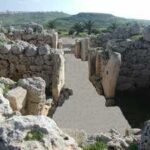Stonehenge, a prehistoric monument of huge rocks aligned in a circular manner, has baffled scientists for centuries. Located near Amesbury, Wiltshire, South England, UK (80 Miles West of London), this World Heritage site was constructed in three major phases within the Middle-late Neolithic period (2950-2900 BC). Its origin is quite controversial. Believers say it was the creation of Merlin the magician, while some owe it to extraterrestrials. Stonehenge’s association with druids dates only from 1905, and has no historical basis, but there are claims that druids gathered near this monument to invoke the Gods and that it served for some magical purpose. Whatever be the belief, superstition or blind faith, one thing is certain. Stonehenge could have been an ancient observatory!
Most students of Stonehenge believe that the general orientation of the axis of the monument at various stages in its development was towards sunrise at the summer solstice in one direction, and towards sunset at the winter solstice in the other, and that this may well have been deliberate. The Heel stone defined the direction of solstitial sunrise more precisely. Statistical arguments and theories regarding Stonehenge states that the number of astronomical alignments between pairs of points selected are of possible significance.
There is also a proposed theory that the 56 Aubrey holes, named after John Aubrey, a seventeenth century discoverer of these holes, could have been used as an eclipse predictor, if markers were removed from one hole to another. A region around Stonehenge appears to have a shift from lunar to solar symbolism since the development progressed from the Neolithic to the Bronze Age. There are evidences that a group of post holes situated in the north-eastern entrance may represent the original construction of the axis oriented on an extreme rising position of the Moon, although this interpretation remains controversial. According to some researchers, drawings of spirals all around the monument depict a spiral galaxy. That claim remains controversial as well.
Although the modern astronomer could use such a structure at Stonehenge to predict eclipses, there are archeological evidences that the prehistoric users had no idea about such things. There are numerical flaws in the probability calculation. Also, except in hilly regions, a line that roughly points towards midsummer sunrise in one direction will automatically point towards midwinter sunset in the other.
It seems that Stonehenge will continue to baffle us for centuries to come because there is simply not enough evidence to draw any strong conclusions about its original purpose and use. While there is evidence that it could have been used for astronomical observations, there is no evidence that it was actually used for that purpose. Given that it took several centuries to complete, maybe it was started as a type of calendar and finished for religious reasons. Although we can probably rule our magic or extraterrestrials as being involved in its construction, we cannot say much more than that.





